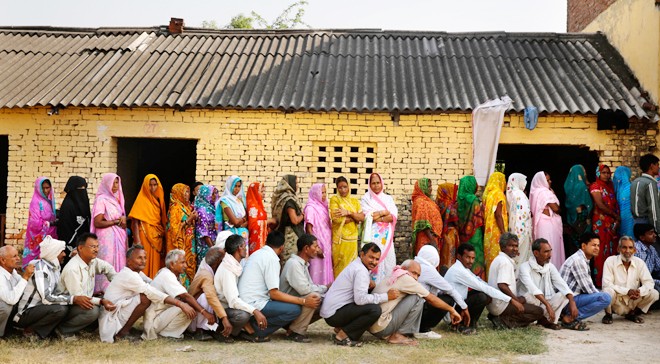

Sitting outside the BJP headquarters in Delhi watching the results come in, it’s impossible not to reflect on the democratic and other growing gaps between India and Pakistan. There’s no hiding it.
Of course, many in India are disappointed that growth has not been faster; that inequality has so sharply increased; that the elite line their pockets whilst leaving the common man to suffer. But when it comes to economics, having peace and being big matter. The truth is that if India and Pakistan grow at roughly equal rates then India has the clear advantage. That’s what comes of having over a billion people as opposed to less than two hundred million.
Take defence spending. For all Pakistan’s success in securing supplies of US weapons systems, it’s difficult to escape the logic that to keep level with India, Pakistan has to run far faster. If India devotes an extra 1 per cent of its GDP to defence then, to match that spending in absolute terms, Pakistan has to devote an extra 7.5 per cent of its GDP.
And don’t forget India was held back for decades by its alignment with the Soviet block and the economic model that came with it. For years that concealed the basic underlying trends.
General Musharraf thought that Pakistan could devise strategy on the basis that it was an economic competitor with India. I remember accompanying him to the Siachin Glacier shortly after he was made army chief and before the coup. Given the significant loss of life on Siachin for no discernable military gain, I asked him the obvious question: what on earth was the point of the conflict there?
"Because of the geography," he replied, "it costs us less to resupply our troops than it costs them to resupply theirs. So on this battlefield we have the advantage."
The idea that Pakistan could somehow bleed India’s finances dry by keeping the Siachin conflict going was outlandish then. Today it seems utterly ridiculous.
The relative economic strength of India and Pakistan and the increasing difference in the size of their two markets feeds through to the amount of diplomatic heft the two countries can muster. There was a time when foreign governments treated the subcontinent’s two major powers as equals. If a minister from the UK visited South Asia then he or she had to follow certain protocols. If the last visit had been to India first and then to Pakistan, the order was reversed for the next visit. And it was quite unthinkable for a visit to be made to India without also going to Pakistan.
Today such niceties seem antique. Officials from all over the world go to India whenever they feel the need to talk about trade and to Pakistan when they want to deliver a lecture on security. And for all its aid, the US has long abandoned the idea of parity. Remember that cursory six-hour visit to Islamabad by President Clinton in 2000? And that’s the least of it.
While Pakistan’s nuclear weapons are considered a potential problem for fear that one day radical Islamists might get hold of them, India’s programme is now perceived by Washington as a welcome bulwark against China.
The 2008 US-India Civil Nuclear Agreement revealed the degree to which Washington’s views of the subcontinent had changed. After three years of talks, India agreed to place all its civil nuclear facilities under International Atomic Energy Agency safeguards and, in exchange, the United States agreed to work toward full civil nuclear cooperation with India, allowing it to access civilian nuclear technology and fuel from other countries. It meant that India had become an accepted nuclear power while staying outside the non-proliferation treaty regime.
Some in Pakistan asked "what about us? If they have effective admission to the nuclear club why shouldn’t we have the same?" It fell to the State Department’s Nicholas Burns, to deliver the answer: "India’s trust, its credibility, the fact that it has promised to create a state-of-the-art facility, monitored by the IAEA, to begin a new export control regime in place, because it has not proliferated the nuclear technology. We can’t say that about Pakistan."
But it’s not just a question of international perceptions. Pakistan is now well into what can only be described as a civil war with two competing ideologies -- theocratic and democratic -- vying for power. The fact that some elements of the state can’t make up which side they are on further complicates the picture.
And it means that if Pakistanis ever get the chance to walk the streets of Delhi they may be shocked by what they see. For all the real problems in India concerning inequality, communalism and corruption, many people in the country -- Muslims amongst them -- are going about their business in safety looking forward to the future with confidence. Millions smiled as they voted. In Pakistan meanwhile worry is etched on faces across the land as people fret about where their country is headed and where the next bomb will explode.
It’s the difference between hope and fear.